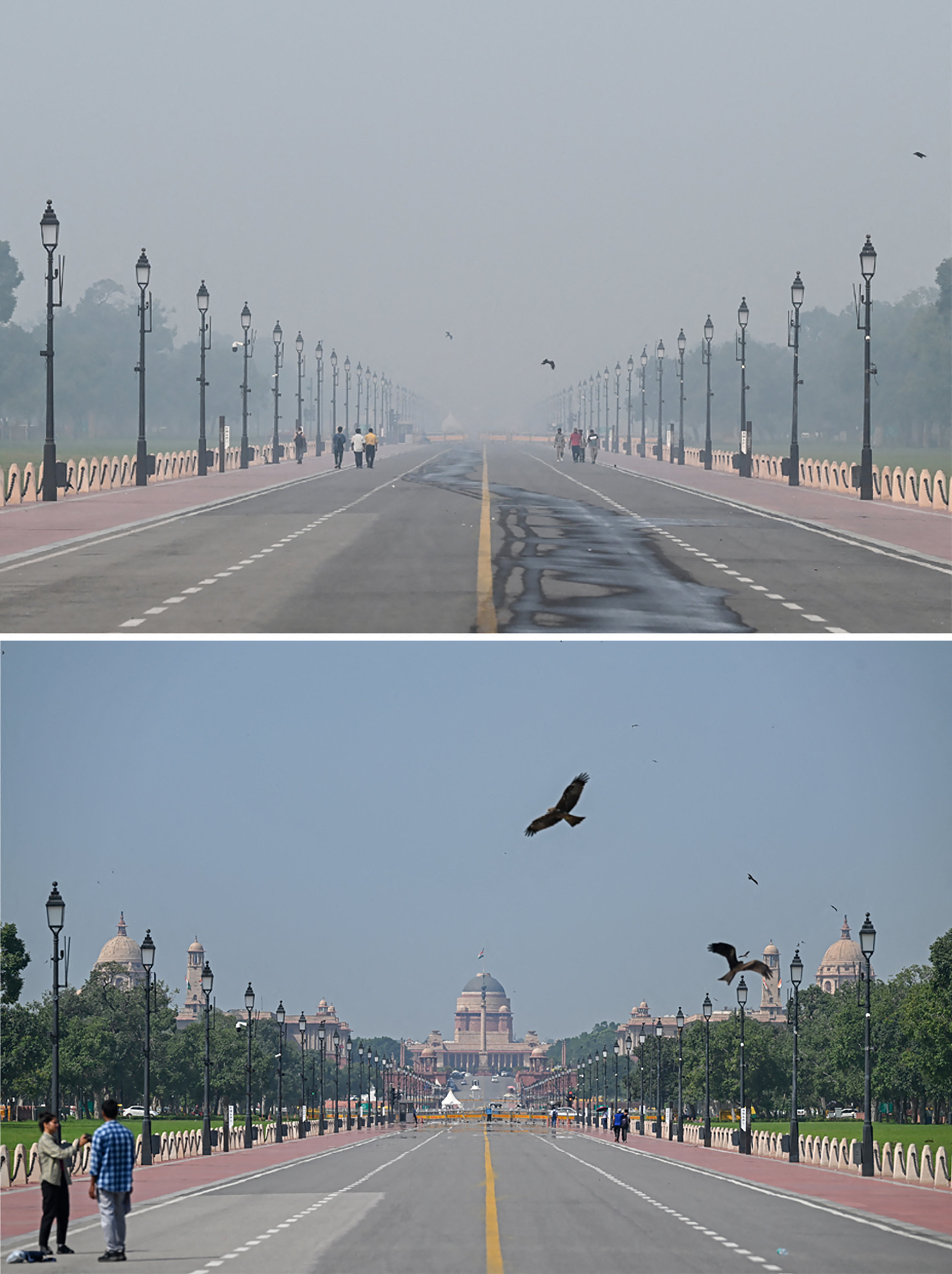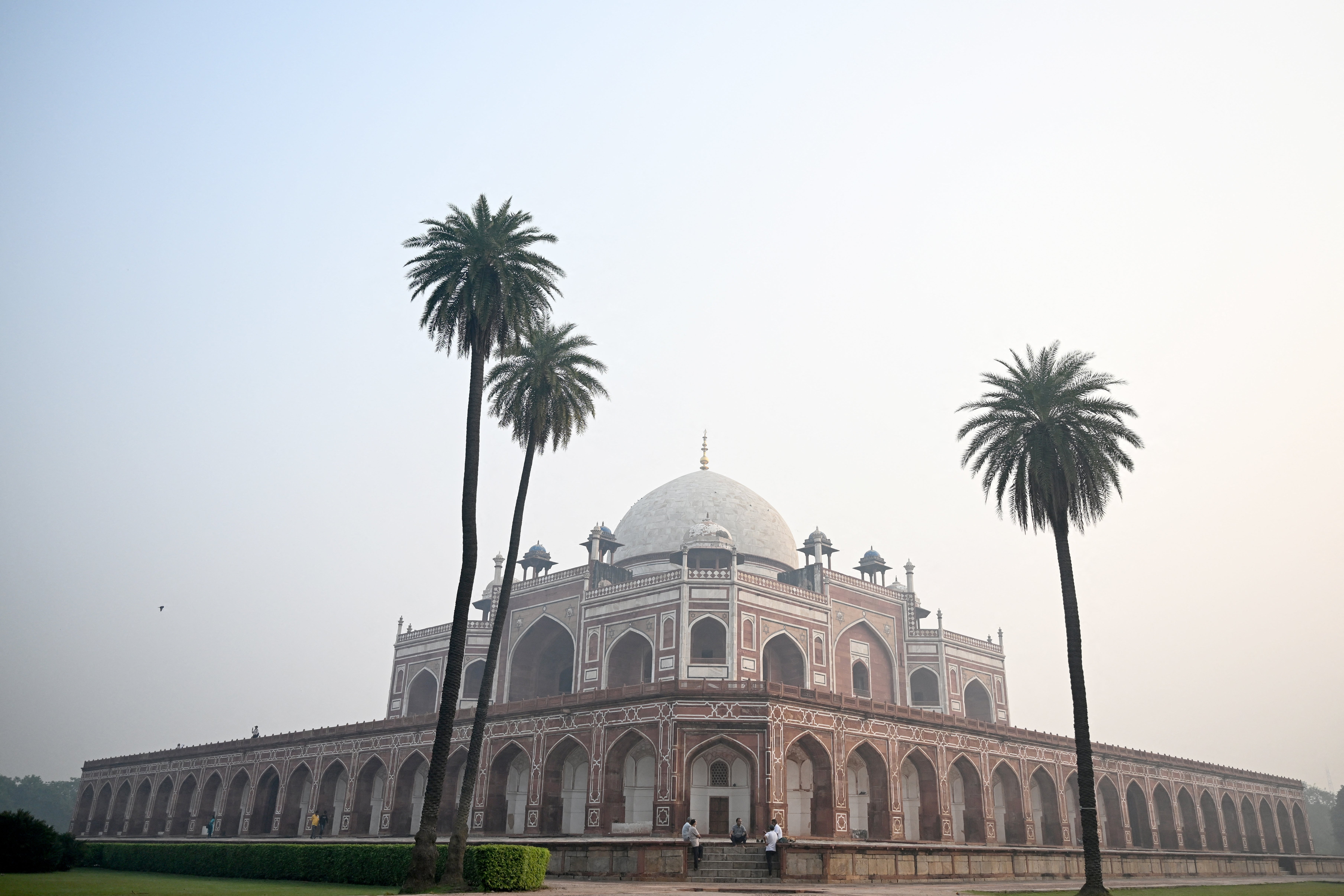Delhi conducted its first trial to address catastrophic air pollution with artificial rain, claiming success despite experts expressing scepticism.
Air quality in the Indian capital plummeted to a “hazardous” level on Tuesday, after a night of heavy fireworks to celebrate the Hindu festival of Diwali worsened seasonal pollution.
The capital lives through toxic smog almost every winter as smoke and fine particulate matter from Diwali fireworks, vehicular traffic, construction activities, and the burning of crop residue mix with stagnant weather conditions to drive air quality down in much of northern India.
This year’s pollution is the worst Delhi has suffered in years. A lawmaker has blamed it on the rich setting off “revenge fireworks” after the Supreme Court lifted a decade-old ban on Diwali pyrotechnics.
The court, despite warnings about worsening winter smog, had permitted the use of “green fireworks” for a pair of short windows, from 6am to 7am and 8pm to 10pm, on the eve and the day of the festival, claiming they produced nearly 30 per cent fewer emissions than traditional ones. But the restrictions were widely ignored in the city, with heavy fireworks going off until well past midnight.
By Tuesday morning, several parts of the capital were covered in a dense blanket of smog that reduced visibility to a few hundred metres.
The Central Pollution Control Board’s monitoring system classified most of Delhi as experiencing “severe” air quality, with AQI readings at Mandir Marg and Lodhi Road surging beyond 1,300. An AQI reading above 400 indicates “severe” or “hazardous” air quality, a level at which it is considered unhealthy to breathe for everyone and not just those with respiratory or heart problems.
On Thursday, as the city of over 30 million people continued to breathe toxic air, state chief minister Rekha Gupta said the capital was ready for its first-ever artificial rain as a cloud-seeding trial in the Burari area had been successful.
“For the first time in Delhi, preparations have been completed to induce artificial rain through cloud seeding, marking a significant technological milestone in the capital’s fight against air pollution. Experts on Thursday successfully conducted a trial test in the Burari area,” Ms Gupta said.
Delhi could experience cloudy conditions on 28, 29 and 30 October, and if the weather remained “favourable”, the city could likely witness an artificial rain on 29 October, she said on X.
In cloud seeding, a small aircraft releases a mix of silver iodide, iodised salt, and rock salt into moisture-rich clouds above the city. The particles act as seeds for raindrops, triggering rainfall that may wash down dangerous pollutants from the atmosphere.

Ms Gupta’s government faced widespread criticism for promoting “green” fireworks for Diwali.
The government, run by prime minister Narendra Modi’s BJP party, had asked the Supreme Court to ease the Diwali ban, proposing the use of “green fireworks” as a compromise between “tradition and environment”.
Delhi ranks among the world’s most polluted megacities, with air pollution reducing the average life expectancy of its residents by around 12 years compared with levels deemed safe by the WHO, according to a report by the Energy Policy Institute at the University of Chicago.
Selling the new plan to combat air pollution with artificial rain to the public, Ms Gupta said it was “not only technologically historic but also establishes a scientific approach” to addressing the problem.
“The government aims to clean the capital’s air and balance its environment through this innovation,” she said, a day after Delhi suffered a pollution level 120 times more than the WHO’s safe limit of 15 micrograms per cubic metre.

While artificial rain might bring temporary respite, experts said only sustained efforts to curb emissions from vehicles, construction, and crop residue burning would secure lasting improvements in air quality.
Cloud seeding is used in the UAE, the US, and China to increase rainfall, reduce hail damage or clear fog, with studies indicating it can boost precipitation by 5 to 15 per cent under suitable conditions.
But experts say it’s not guaranteed to work in Delhi and offers, at best, a short-lived respite from pollution if root causes are left unaddressed.
Delhi’s plan for cloud seeding “in reality is a textbook case of science misapplied and ethics ignored”, Shahzad Ghani, an assistant professor at the Centre for Atmospheric Sciences at IIT Delhi, said.
“Snake-oil solutions will not clear the air in Delhi or the rest of North India,” he wrote in an article for The Hindu paper. “Instead, courage is required on the ground: to reduce the sources of pollution and pursue equitable, evidence-based action. Anything less is not just misplaced science – it is an ethical failure, a diversion from the patient, unglamorous work needed to ensure clean air throughout the year.”

